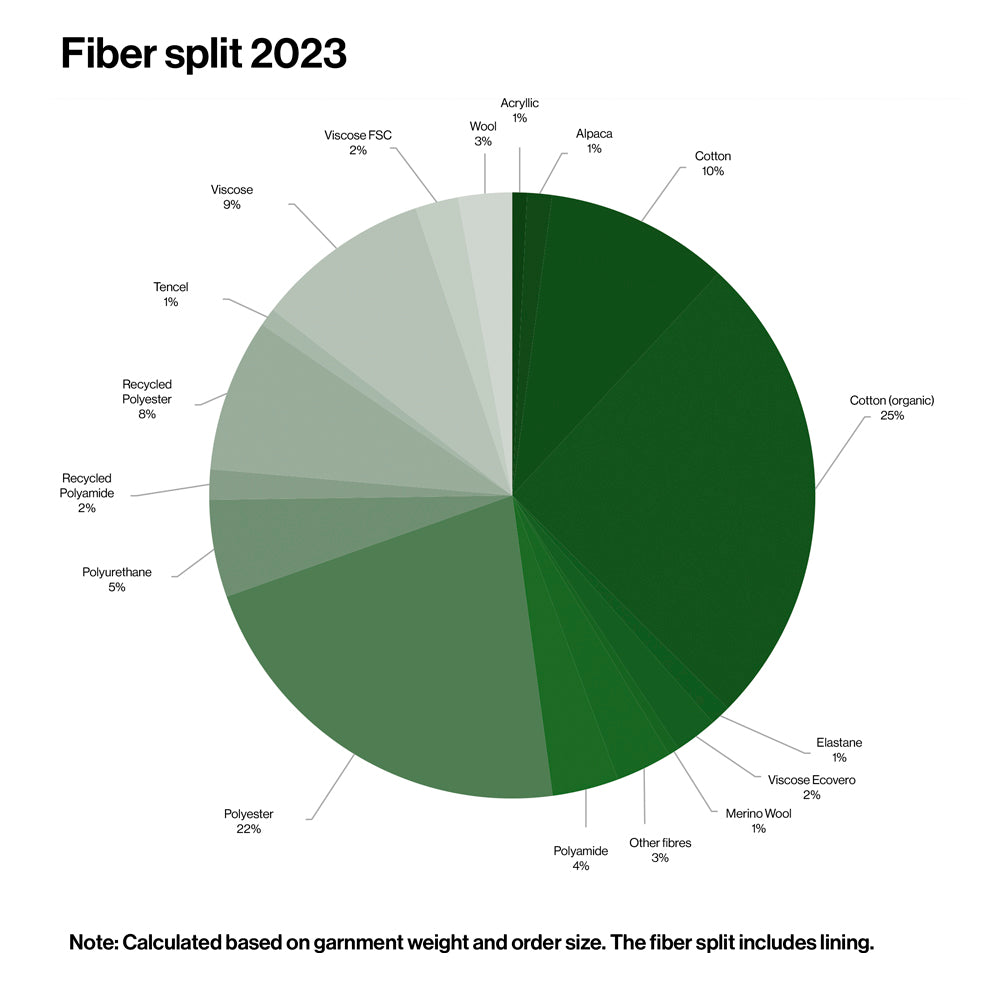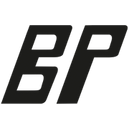Focus Areas
To strengthen our social and environmental performance, we have identified five key focus areas that guide our actions and help us make measurable progress
Our five focus areas include transparency, creating forward-thinking products, minimizing plastics, ethical and fair working conditions, and customer engagement.
Transparency
Understanding the processes behind our products is essential for identifying our environmental and social impact. We work closely with our partners to reduce this impact by improving our supply chain transparency. This includes systematic supplier mapping, sharing knowledge openly, and building long-term relationships with suppliers. These efforts support our alignment with UN Sustainable Development Goal 12: Responsible Consumption and Production.
SUPPLIER MAPPING – CONTRIBUTING TO SDG 12
Transparency requires an ongoing effort to identify and monitor all suppliers involved in our production. We are actively mapping our supply chain across all three tiers and maintaining updated records:
- Tier 1 – Final production stages such as cutting and sewing, where our designs are assembled.
- Tier 2 – Textile transformation processes including knitting, weaving, dyeing, and finishing.
- Tier 3 – Raw material sourcing, including farmers, textile recyclers, and yarn spinners.
This mapping process helps us identify risk areas and collaborate on improvements where we can have the most influence.
KNOWLEDGE SHARING & STAKEHOLDER DIALOGUE
We publish an annual CSR report that outlines our progress, ongoing challenges, and the actions we’re taking. Our policies are available on our website. We also maintain a dedicated CSR contact point to answer questions and invite input from partners, stakeholders, and the public.
If you have questions or suggestions, we encourage you to contact us at responsibility@baumundpferdgarten.com.
RISK COUNTRIES – COMPLYING WITH SDG #6 & 10
To help us evaluate and prioritise where risks are present, we use the Amfori BSCI country risk classification. The classification highlights the countries where we need to be extra aware of the treatment of the workers.
SUPPLIER RELATIONS – COMPLYING WITH SDG #12
We prioritize long-term collaboration over short-term transactions. Our approach is based on open dialogue and continuous improvement rather than disengagement. Ending a supplier relationship is always a last resort, used only when repeated issues cannot be resolved through cooperation.
We define long-term suppliers as those we’ve worked with for five years or more. These relationships allow us to build mutual trust and encourage better working and environmental standards.
To monitor and support supplier practices, we combine third-party audits with direct engagement. In addition to audit results, we seek to maintain regular contact with key suppliers through scheduled on-site visits when feasible. These visits help us build stronger relationships and gain a clearer understanding of how our standards are being implemented in practice.
Forward-thinking products
We work to reduce the use of harmful substances by following the REACH regulation and setting clear chemical requirements for our suppliers. This helps protect the health of workers, customers, and the environment.
Our approach to design is guided by a circular mindset — aiming to extend product lifespan and support future reuse or recycling. This includes prioritizing long lasting design and favoring monofiber materials where feasible to improve recyclability.
We aim to make more responsible material choices by selecting fibers with a lower environmental impact when available — including options like organic cotton, TENCEL™, and recycled polyester.
For us, a forward-thinking product brings together improved material choices, long-term use, better processes, and increased awareness of chemical impacts.
BETTER MATERIALS - COMPLYING WITH SDG # 6, 12 AND 15
Material choices play a significant role in the overall impact of our products — in many cases, they account for a large share of the environmental footprint.
When selecting materials, we aim to balance design, performance, and lower-impact alternatives wherever feasible.
To guide these decisions, we use five practical considerations — the five C’s:
Cares for the planet
The material has a lower environmental footprint compared to conventional alternatives, based on available data.
Cares for animals
If animals are involved in the material’s production, we consider welfare practices and aim to avoid materials linked to poor treatment.
Complements form
The material should support the intended look and feel without requiring excessive chemical treatment or modification.
Complements function
The material should perform reliably in everyday use and care, without demanding unusual maintenance to stay functional.
Complements longevity
The material should be durable enough to support long-term use and help extend the product’s life cycle.
We have created a Preferred Material Guide that serves as a tool for our designers and product developers to work systematically in making better material choice.
Favoured materials represent those we define as the best choice.
Better materials represent those we consider a better choice.
Phase Out materials represent those that we aim to reduce the use of and replace with better or favoured materials.
Banned materials represent those that under no circumstances are acceptable in our products
* Mohair is banned unless from audited farms, complying with the Mohair Industry Sustainable Guidelines
** Synthetics including but not limited to polyester, nylon, elastane.

Material Benchmarking
Cotton
GOTS, Recycled
Hemp & Linen
Organic, Recycled
Tencel, Ecovero, Refibra
Lenzing Trademark
Acetatate
Naia Trademark
Wool
Organic, Recycled, RWS
Alpaca
RAS
Mohair
RMS
Silk
Organic, Recycled, Peace Silk
Recycled Synthetics
Certified
Cotton
Organic certified
Hemp & Linen
Conventional
Lyocell, Certified Viscose
Wool
Conventional
Alpaca
Conventional
Cashmere
Certified, Recycled
Cotton
Conventional
Viscose&Rayon/Bamboo/Cupro
Conventional
Acetatate
Conventional
Silk
Conventional
Synthetic Fibers
Conventional
Down
Fur & Leather, Exotic Skins
Mohair, Angora
Conventional
Real Mother of Pearl
PVC
Plastics
We continuously evaluate how our products are packaged and transported, and we look for smarter ways to reduce our use of plastic.
Plastic remains a necessary material in parts of our business — both for protecting products during shipping and as a component in certain fabrics due to its durability and versatility.
REDUCING OUR USE OF PLASTIC – IN LINE WITH SDG # 12
While we have not eliminated plastic use, we continue to reduce our reliance on it where possible. We actively look for alternatives and use recycled plastics and recycled synthetic fibres when viable and we aim to ensure that the plastic we use is either recycled, recyclable, or compostable — depending on what current infrastructure allows.
We have already eliminated plastic carrier bags in our store and replaced them with reusable cotton tote bags — a small but important step.
We also share care instructions to help customers reduce microplastic shedding when washing synthetic materials, including recommendations for filters and laundry bags.
Ethical & Fair
We expect everyone involved in our supply chain to be treated with fairness and respect. That includes being free from discrimination and having access to safe, decent working conditions. Wages should reflect the worker’s role, skills, and effort — not personal background or identity.
Our Animal Welfare Policy sets out clear expectations, and we continue to refer to it when selecting suppliers or sourcing animal-based materials.
We recognise that the people and animals connected to our supply chain deserve to be treated with dignity. Our Code of Conduct and ongoing supplier dialogue help us address issues such as wages, safety, and reasonable working hours. These tools support our efforts to maintain ethical standards and encourage transparency in the production of our products.
HUMAN RIGHTS & HONEST WORK - IN LINE WITH SDG #10
We stay in touch with our suppliers to better understand working conditions, wages, and the challenges they face. Where possible, we take their input into account when planning production, aiming to avoid contributing to unrealistic expectations or unnecessary pressure
We have policies in place that promote equal treatment and aim to prevent discrimination based on age, background, gender, nationality, religion, or sexuality. We do not accept harassment or any form of mistreatment in our supply chain. These principles are reflected in our Human Rights Policy and Code of Conduct.
ANIMAL WELFARE - IN LINE WITH SDG #12
When animal-based materials are part of our products, we acknowledge our responsibility to consider how animals are treated in the supply chain. We refer to our Animal Welfare Policy to guide our choices and to avoid materials linked to clearly harmful practices.
Our policy outlines a few minimum expectations, such as not accepting materials sourced through mulesing, live-plucking, or force-feeding.
Customer Engagement
We cannot extend the life of our products on our own involving our customers is essential. We provide guidance on how to care for garments through care labels and through our care & repair guide.
We encourage customers to repair, share, or resell products instead of discarding them when they are no longer needed. These small actions can help extend the use of each item.
